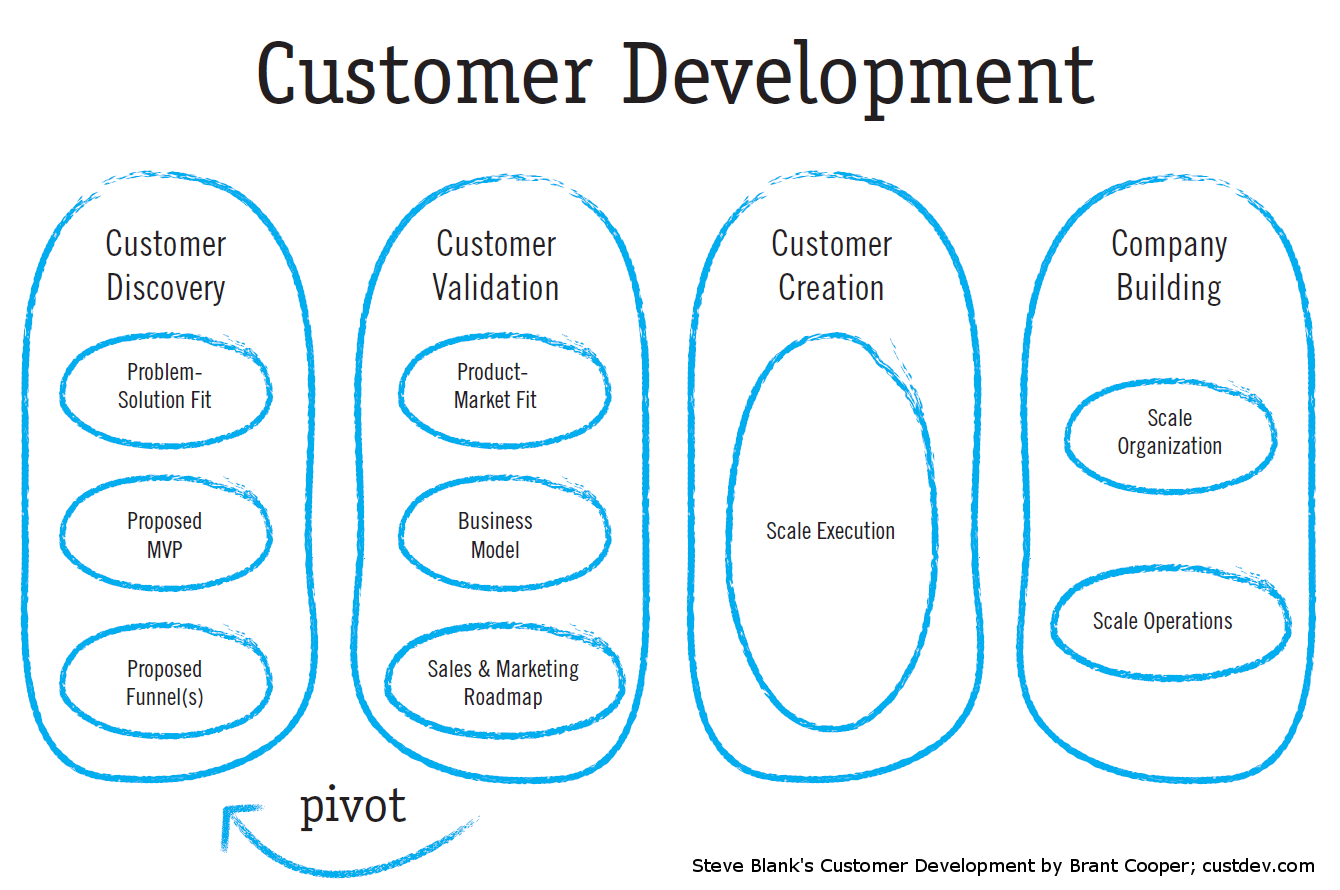The Customer Discovery Process and the Talent Challenge
Customer Discovery is the process of understanding customer pain points, needs, and personas. The early questions to be addressed in the Customer Discovery Process are problem definition, not solution definition. Inspired by Brant Cooper, we are working to implement Steve Blank’s process, but our intelligence solutions have been custom designed and deployed for clients to fit their domain and their immediate issues, which is not a scalable business model. As we seek to find that scalable solution, we have been slowly reducing this to a short list of Big Problems, that if solved, can scale to a larger mission.Now includes Talent, Geospatial (earth observation), Space, Finance and Performance Measurement. This post is about talent as we work on the following questions:
- What do you think is the biggest pain for your customers when it comes to talent?
- Is it the same at all levels of the company?
- If your customer could wave a magic wand and change anything, what would it be?
- Since your product doesn’t exist, what do people do today to solve their problems?
1. What do you think is the biggest pain for your customers when it comes to talent?
The research on the Great Resignation points clearly to talent development (recruitment, training, retention, and knowledge transfer) a huge pain today in the C-suite.
The challenge is at a critical level due to the large increase in employee resignations following the COVID recession and the difficulty finding and hiring employees. This issue is well documented at the macro level, and research has identified major causes and effects. It is widely recognized that this is not a temporary phenomenon but part of a longer-term trend.
Current research indicates that organizations do not have the systems in place to provide management with the intelligence they need to address this problem. Furthermore, research shows a gap in the collection of soft data that will provide an understanding of how employees feel about a range of personal issues that involve work/life balance, social and gender equity, childcare, hybrid work, and upskilling programs.
Hypothesis
There is a need to measure programs, training, DEIA, knowledge transfer, and hybrid work initiatives. There is an opportunity to provide the systems, surveys, data collection and analytics infrastructure to define the issues at the organization and department levels.
2. Is the problem the same at all levels of the company?
The problem sets and obtainable opportunities are different at each level of a company. The HR executive will most likely be the one tasked with the data collection and reporting, along with most of the program initiatives for the COA (course of action). Issues identified as critical to the C-Suite will not be the same problem sets of an HR executive. The solution must be able to address standalone intelligence at the team, course, or department level but also aggregate to the organization and departments.
Hypothesis
The analytics collection, fusion, and reporting can be done on a common platform that scales within the company. SME support for building the surveys, focus groups, training, and knowledge repository will need to be tailored.
3. If the customer could wave a magic wand and change anything, what would it be?
They can’t! They don’t even know which magic wand to use. The first step is to build/modify their intelligence systems to identify and scope the problems and priorities. Per McKinsey, “Employers can’t fix what they don’t understand”.
Hypothesis
This solution needed is generally outside the scope of traditional HRIS built with a top-down perspective focused on collecting what the company thinks the employee should be doing/thinking instead of the reverse. We need to capture the root of the problem or pain, asking sincerely the employees what they are concerned about.
4. Since your product doesn’t exist, what do people do today to solve their problems?
Historically, decisions have been driven by experience and the 3Gs: “Google, Gut instinct, and Guys with MBA’s”. Leaders have been managing people all their careers and have a hard time admitting that they don’t understand their employees. This is the ‘Gut Instinct’ G and is the “intelligence solution” management relies on today. That approach has been broken with virtual work, unfamiliar technology, a diverse and younger workforce, and an impossibly tight labor market that flips the power dynamic upside down.
Hypothesis
There is a unique opportunity to provide an employee intelligence solution (Talent Intelligence Stack) that has the AI technology to process language “soft, natural human feedback”, integrate market data, and can scale across thousands of employees with a domain/company-specific knowledge base (taxonomy).
The approach must include “human in the loop” subject matter experts to include recommended COAs, and be integrated with internal and external data sources.
We are reaching out to executives and HR professionals to find out whether their data supports our hypotheses to decrease attrition. We would love to hear from you and connect with those you feel could help. Do you think we are asking the right questions? Have we done our due diligence in answering them? We will continue to post more findings as we continue this journey.


